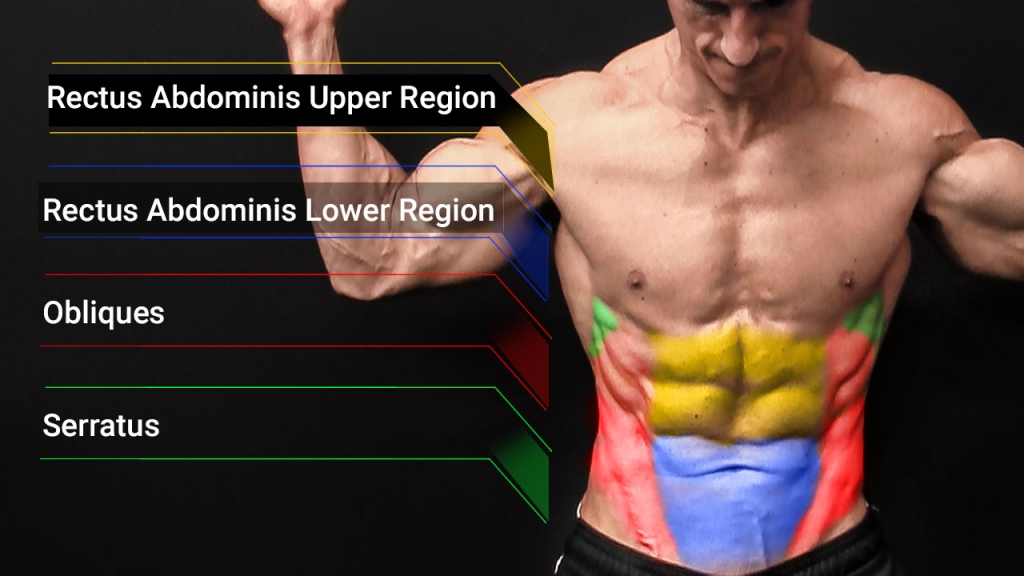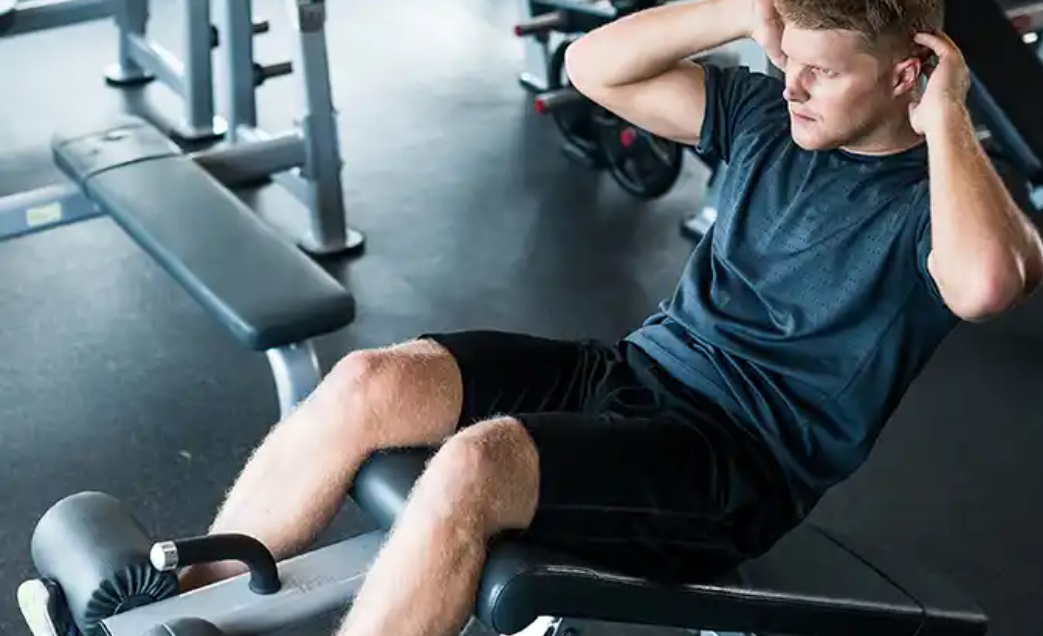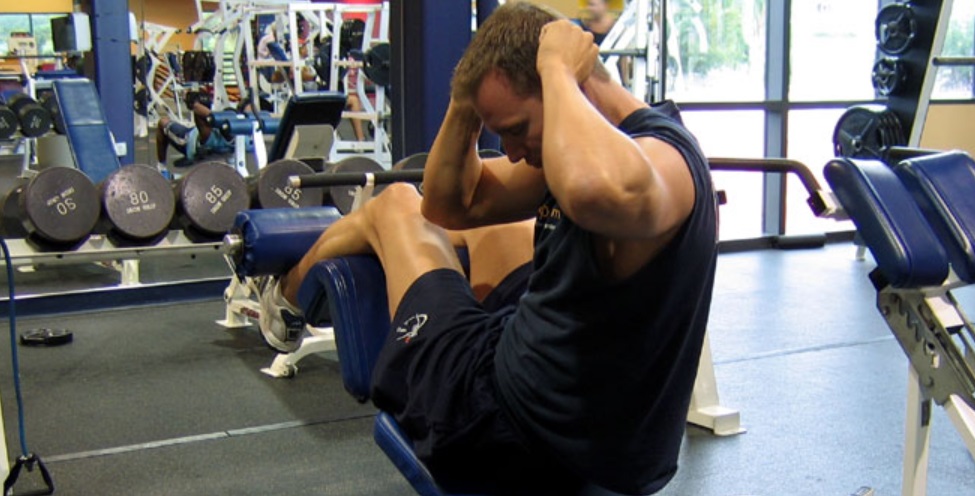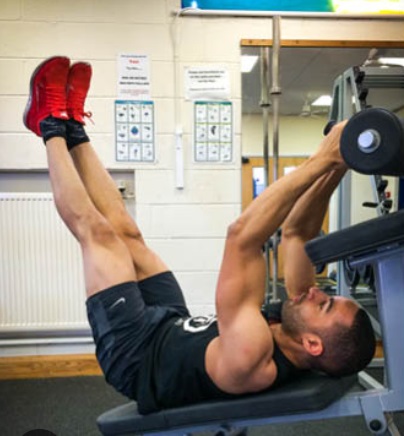- When you are looking for that well-defined abs, efficiency, variations, and progress are the name of the game.
- Let’s be real – while we all love our pizza, maintaining a strong core is crucial for posture, especially when those occasional indulgences happen.
- Did you know that over 90% of individuals who incorporate five-minute ab training into their fitness routine report improved core strength and endurance?
- Research also suggests that people who engage in regular five-minute ab training are 25% less likely to experience lower back pain compared to those who don’t.
Today, we’re diving into the most efficient way to train your abs, ensuring a quick and effective workout with tips on techniques for progress, and a variety of exercises to keep things interesting.
Understanding Your Abdominal Muscles
- Rectus Abdominis: Front and center, running vertically from the sternum to the pelvis. It is responsible for flexing the spine and creating the coveted six-pack appearance.
- Obliques (Internal and External): It is located along the sides of the torso, with internal and external divisions. They enable torso rotation, lateral flexion, and provide overall core stability.
- Transverse Abdominis: Located in the deepest layer, wrapping around the torso horizontally. Acts like a natural corset, providing core stability and compressing the abdominal contents.
- Erector Spinae: It is situated along the spine, running parallel to the rectus abdominis. Supports the spine and assists in maintaining an upright posture.

Why to Work the Abs?
The most effective abs workout is an artistic combination of large sets, crunches, and leg lifts that are precisely selected to elicit optimal muscle engagement and stimulate overall development.
- This regimen paves the road to a sculpted core that not only comes with aesthetic appeal but also functional strength and durability by emphasizing quality over quantity, appropriate form, and a holistic approach.
- A six-pack is commonly regarded as the peak of aesthetic fitness, but the importance of abdominal muscle training extends beyond physical appeal. The core muscles (rectus abdominis, transverse abdominis, and obliques) are critical to overall health. While the attraction of well-defined abs is clear, training also has functional benefits.
- Achieving core stability, crucial for balance and coordination, involves training the abdominal muscles.
- These muscles serve as a central support system, reducing the risk of injuries in daily activities and sports performance.
- A robust core not only prevents injuries but also enhances posture, providing a foundation for proper body alignment. Aside from the outward benefits of a toned stomach, abdominal muscle training has internal benefits as well.

The Decline Bench Saga
- To maximize efficiency, we are turning to the powerhouse technique of giant sets. In our pursuit of sculpted abs, the decline bench takes center stage, and we start with the time-tested crunch. The brilliance of this exercise lies in its adaptability – your control over difficulty is the key to unlocking its full potential.
- The decline bench serves as our training ground, and the initial focus is on perfecting the art of the crunch.
- By leaning back further, you create a challenging, steeper angle, pushing your core to its limits. Alternatively, staying upright offers a more controlled, slightly easier approach.
- However, the true essence lies in the dynamic interplay of extension and flexion. This isn’t a static exercise – it’s about avoiding the pitfall of sitting still and merely crunching forward.
- To reap the full benefits, engage both extension and flexion, ensuring a complete range of motion that activates your entire core.
- The goal is not to be locked in place but to move dynamically, allowing your core muscles to fully engage and activate.

Hitting the Transverse Plane
- As our ab workout unfolds on the decline bench, we transition from crunches to a strategic focus on the transverse plane.
- Leaning back on the decline bench, our attention turns to the sides, activating the transverse plane and engaging the obliques.
- This deliberate adjustment adds variety to the routine, ensuring a comprehensive workout that focuses not only the central abdominal muscles but also the often-neglected lateral aspects.
- The dynamic nature of core training lies in its incorporation of movements across the transverse plane. It’s not just about traditional crunches but also lateral flexion, creating a three-dimensional challenge for a sculpted midsection.
- As the intensity builds and fatigue starts to set in, a brief reset becomes crucial. Seated on the decline bench, it’s time to crunch forward, lifting those shoulders slightly. This strategic reset allows you to catch your breath, recenter your focus, and prepare for the next wave of challenges.
- In this dynamic sequence, the mantra becomes clear: Crunch forward, breathe, and then repeat.

Leg Lifts for the Win
- Leg lifts, combined with the preceding exercises, targets various angles and planes. It’s not just about the upward crunch or the lateral engagement; it’s about extending the challenge to the lower extremities, creating a holistic ab workout that leaves no muscle group untouched.
- The introduction of leg lifts serves a dual purpose – to exhaust the core muscles, pushing them to their limits, and to strengthen them for enduring power.
- This final push ensures that you conclude your ab workout on a high note, having challenged your core comprehensively.

The Five-Minute Abs: Three Rotations
- The magic happens with three rotations of this giant set sequence.
- By efficiently cycling through these exercises on the decline bench, you’ll find yourself with a killer ab workout in just five minutes.
- Whether you’re a fitness enthusiast or someone navigating the occasional dietary detour, this routine allows you to stay committed to your core strength goals without sacrificing too much time.
- So, there you have it – an efficient, challenging, and time-saving ab workout that accommodates even the busiest schedules. Embrace the five-minute abs challenge and make every rep count!
Consistency Is The Key
- Consistency extends beyond the gym and includes nutritional choices. Unveiling the results of your efforts requires a well-balanced and nutritious diet.
- Fueling your body with the right foods supports muscle repair and overall health, with special emphasis on adequate protein intake for muscular growth.
- While personal commitment is essential, getting professional assistance can add an added layer of accountability and knowledge.
- Consistency does not entail monotony, and altering your ab workouts is critical to avoid plateaus and boredom. Whether you choose an organized large set routine that pushes your core with several exercises or a short 5-minute workout that targets specific muscle regions, variability in your training regimen keeps your body adjusting and responding favorably.
- Diversifying core exercises not only engages different abdominal muscle sections but also adds an interesting cognitive element, contributing to sustained motivation in the long run.
- The most effective abs workout emphasis on quality over quantity. This routine promotes proper muscle engagement and growth.









